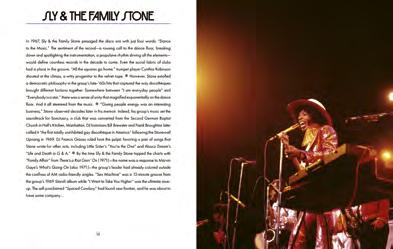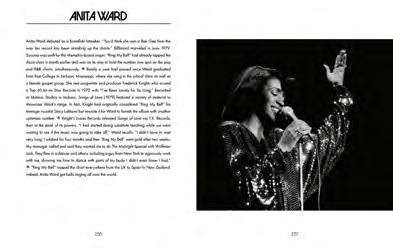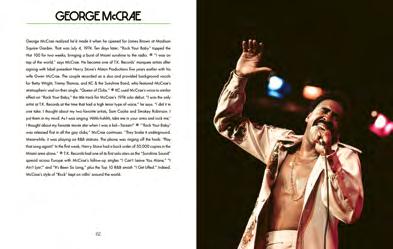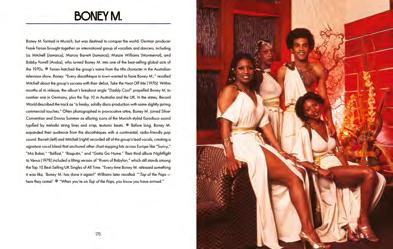








Disco began with the discothèque. Before it was a musical style or a sensibility, disco was a place. A French term that translates to “record library,” the discothèque, and its shortened sobriquet, became a destination for imagination and fantasy. It’s where disc jockeys reigned supreme, spinning and mixing records to mesmerizing effect. ● “Discothèque music,” or music that DJs played in the clubs, encompassed soul, funk, pop, rock, and percussive-driven styles from across the globe during the early ‘70s before a confluence of elements formed a definable genre of music. “There is a disco beat, but the music that went over it can be varied,” says Melba Moore, who recorded with dancemusic dynamos like Van McCoy, Pete Bellotte, and McFadden & Whitehead throughout the ‘70s. “The music moved you to want to get on the dance floor.” ● Dancing was the ultimate form of self-expression—especially with fashion designed to accentuate the body under swirling lights—and discothèques galvanized the liberating power of the beat. As original CHIC vocalist Alfa Anderson said, “Disco was always a place where people could get away from society’s restrictions… The world puts you in a box, but when you’re on the floor dancing, and you grab somebody’s hand, it doesn’t matter whose hand it is.
That’s what disco gave to the world.” ● A Night at the Disco celebrates the story of disco through the artists who made it happen. It reflects a progression of sounds and styles that evolved between 1970 and 1979, dance music’s most seminal era: from orchestral masterpieces by Isaac Hayes and Barry White to groups like Silver Convention and Dr. Buzzard’s Original Savannah Band, whose music introduced new textures to the clubs; plus, musical giants like James Brown and Sly & the Family Stone, who laid the foundation for the dance music revolution of the 1970s. A Night at the Disco also shows how pop artists like Cher and ABBA tailored their sound for the clubs and were rewarded with blockbuster hits or, where the Bee Gees were concerned, a GRAMMY Award-winning soundtrack. ● “It was a very interesting time to me,” said Donna Summer, remembering her ascent as the Queen of Disco. “Everybody was on fire. They were on fire with the love
of what they were doing and the hope of success. They were on fire with the knowledge that they were doing something that might last longer than just a few weeks. Everybody just poured themselves into what was going on.” Musically, discothèques mirrored that combination of passion and boundless creativity. “People are always going to want to dance,” says Valerie Simpson. “If they can get a melody and a thought, and something that is uplifting while they’re moving, then it has a chance to last.” Five decades later, the dance music of the 1970s retains its power to move and inspire. ● A Night at the Disco you could see anything and anything could happen. Music was the force behind it all. The artists on these pages welcome you to the dance floor...

James Brown said it best: “Isaac Hayes is one of a kind.” As a songwriter, producer, and session player for Stax Records in Memphis, Hayes had created some of the hottest records of the 1960s, including Sam & Dave’s “Soul Man,” before crowning the decade with his own musical statement, Hot Buttered Soul (1969). It was a sprawling masterpiece... and it featured only four cuts. ● Hayes’ boundless approach to recording introduced a format that several producers would tailor for the discothèques (and the bedroom) throughout the 1970s, whether Giorgio Moroder & Pete Bellotte’s production of “Love to Love You Baby” for Donna Summer or Cerrone’s epic ode to ecstasy, “Love in C Minor.” Only a visionary like Hayes could turn a three-letter word like “Joy” into a 16-minute experience. ● At the 1972 Academy Awards, Hayes won Best Original Song for “Theme from Shaft,” thereby making history as the first Black musician to win an Oscar. He also popularized a symphonic musical style that would reverberate throughout the decade. Indeed, in September 1979, Billboard declared “Theme from Shaft” as “a forerunner of the funky but tight rhythms that would be labeled ‘disco’”. ● As disco swelled from the underground to the mainstream, Hayes tailored his signature style to the clubs. Tracks like “Chocolate Chip,” “Disco Connection,” “Groove-A-Thon,” and “Don’t Let Go” induced their own kind of fever. Disco pioneer Tom Moulton even mixed two of Hayes’ most gripping productions, “Stranger in Paradise” from the Broadway musical Timbuktu! and the masterfully orchestrated “Moonlight Lovin’ (Mènage a Trois)” for Hayes’ Polydor debut, New Horizon (1977). ● “I’ve always been somewhat of a renegade,” Hayes shared in an interview with Georgia Public Broadcasting. “Creatively, I dared to go where others feared to go.” Isaac Hayes not only dared; he conquered.


“The Mother of Hip Hop.” Pioneering record producer. Rock and Roll Hall of Fame honoree. Queen of boudoir soul. Only one person can claim it all—Sylvia Robinson. ● Years before she entranced listeners with “Pillow Talk” in 1973, Sylvia established her career as a singer, songwriter, and producer, especially as one half of Mickey & Sylvia (“Love is Strange”). In 1968, Sylvia and her husband Joe Robinson founded the independent label, All Platinum Records. She produced the chart-topping “Love on a Two-Way Street” for The Moments in 1970 and scored her own number one solo hit with “Pillow Talk” three years later. Sylvia had offered the erotically charged anthem to Al Green before approaching it from a woman’s point of view. “I just wanted to say things that women wanted to say but were afraid to,” she told Dazed years later. “I sang about sexy thoughts and fantasies.” ● A jolt of galloping grooves powered Sylvia’s next chart-topping smash, “Shame, Shame, Shame” (1974), which she wrote and produced for Shirley & Company on All Platinum’s Vibration label. Two decades earlier, the song’s lead vocalist Shirley Goodman had made jukebox favorite “Let the Good Times Roll,” as part of Shirley & Lee. “Shame, Shame, Shame” spent four weeks at number one on Billboard’s Disco Action chart in January 1975 and reached the Top 10 in nearly a dozen countries across the globe. However, Sylvia broke ground when she co-founded Sugar Hill Records in 1979 and produced “Rapper’s Delight” by The Sugarhill Gang, hastening hip hop’s rise as a commercial force in the 1980s. Whether it was rap, disco, or a sweet dose of sumptuously orchestrated soul, Sylvia always took it to the top.
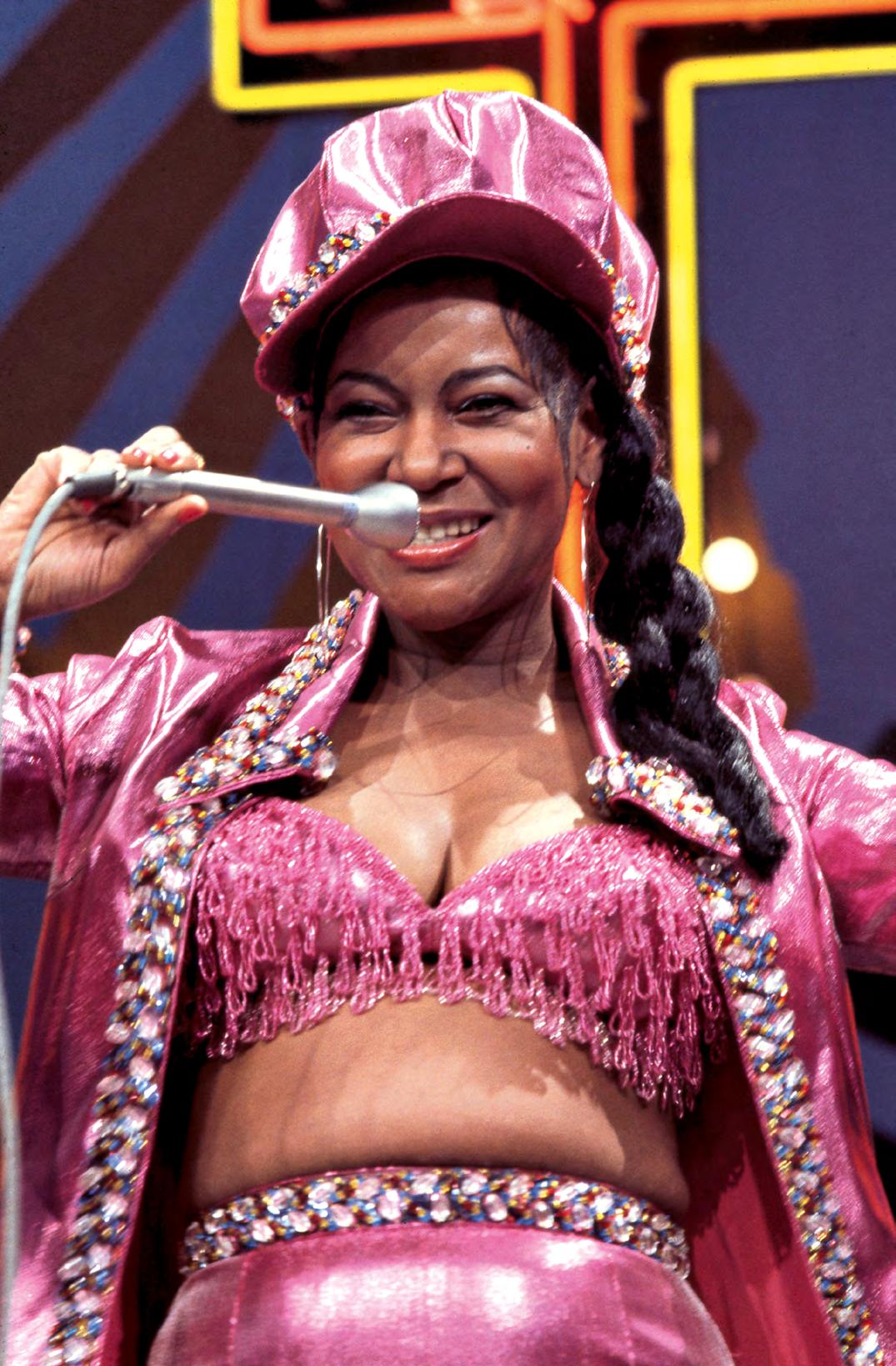
The Jackson 5 brought a dash of disco flash to The Tonight Show Starring Johnny Carson in November 1974. “They’re one of the most exciting groups in the entire world,” Carson said. “They have sold over 50 million records. And this is their latest album, which is called Dancing Machine (1974).” ● An extended version of “Dancing Machine” had originally appeared on the group’s Get It Together (1973) album and topped the R&B chart earlier that year. What most of Carson’s viewing audience didn’t know was that other tracks from the Jackson 5’s two most recent albums were in heavy rotation at New York’s hottest gay clubs, especially the marathon grooves of “Hum Along and Dance” and “I Am Love.” ● “The Jackson 5 have been full of surprises the past few years,” Vince Aletti noted in his column for Record World upon the release of the group’s last Motown album, Moving Violation (1975). It opened with producer Brian Holland’s thunderous remodeling of “Forever Came Today,” originally recorded by Diana Ross & the Supremes. “The results are stunning,” declared Aletti. “The cut everybody’s talking about... Surely one of the finest productions this year.” ● “Forever Came Today” topped Record World’s disco chart for four weeks during the summer of 1975, establishing Michael, Jermaine, Jackie, Marlon, Tito, and youngest brother Randy Jackson as princes in the expanding musical kingdom of disco. ● Signing with Epic Records, The Jacksons matured into a supergroup whose songs worked in clubs and arenas alike, capping the decade with two disco classics remixed by John Luongo from their album Destiny (1978), “Blame it on the Boogie” and “Shake Your Body (Down to the Ground).” Michael’s command to “dance! shout!” on the latter cut foretold his own mantra for the dance floor: “Don’t Stop ’Til You Get Enough.”


Silver Convention introduced a constellation of vocalists and musicians that turned Munich into the main hub of Eurodisco. “I was very much influenced by R&B music, Barry White and Isaac Hayes,” says Hungarian songwriter and arranger Sylvester Levay, whose nickname “Silver” inspired the group’s moniker. “We were very much hooked on the Philadelphia sound. That was this really great groove with the hi-hat.” ● Recorded in 1974, “Save Me” introduced the Silver Convention template—Levay’s crisply arranged strings, soaring above drummer Keith Forsey and bassist Gary Unwin’s bed of rhythm. “‘Save Me’ really did represent a new sound,” says Lucy Neale, who sang the lyrics alongside Munich-based session singers Gitta Walther, Roberta Kelly, and Betsy Allen. “There were these classical musicians from the Bavarian Symphony Orchestra playing in the studio on this disco tune! It was really exciting.” ● Midland International Records acquired “Save Me” for North America in February 1975, building on the label’s previous club success with “Doctor’s Orders” by Carol Douglas, and requested a full-length album. The same set of musicians and vocalists, plus Jackie Carter, reconvened at Union Studio in Munich to record what became Record World’s #1 “Most Essential Disco Album of 1975.” It also spawned a GRAMMY Award-winning smash that topped the pop, R&B, and disco charts—“Fly, Robin, Fly.” ● Producer Michael Kunze hired [from left to right] Linda G. Thompson, Ramona Wulf, and “Lady Bump” vocalist Penny McLean for promotional appearances, though the trio wouldn’t record together until Silver Convention’s second album, Get Up and Boogie (1976). A series of lineup changes led to the group’s final Top 10 disco hit “Spend the Night With Me” (1978), but their impact far exceeded their four-year lifespan. ● Because of Silver Convention, Eurodisco was now in full flight.


A Paris-based trio from Martinique inviting listeners to America? That’s how the Gibson Brothers introduced themselves on their debut single, “Come to America” (1976). Recorded during the United States’ bicentennial, the song sparked a successful relationship between group members [left to right] Patrick Francfort (drums), Chris Francfort (lead vocals), and Alex Francfort (keyboards) with French producer Daniel Vangarde, who named the group and produced their albums on his label, Zagora. The song reached the Top 20 in Italy and Belgium and primed the group’s follow-up single “Non-Stop Dance” for the top spot in Belgium and Holland. ● The Gibson Brothers made inroads to North America when T.K. Records released the title track to Heaven (1978), which Record World described as “another real knockout… the vocals are fine and forceful.” However, it was the trio’s fourth album Cuba (1979) that spawned three club smashes across the globe, including the Latin-inspired title track, “Oooh, What a Life,” and “Que Sera Mi Vida (If You Should Go).” The driving, locomotive energy of the track, coupled with Chris Gibson’s robust vocals, powered the latter tune to number one in Holland, Denmark, and Belgium, and the Top 5 in Sweden, Switzerland, Germany, and the UK. ● The Los Angeles Times sensed the album’s club appeal in the US, where both “Cuba” and “Que Sera Mi Vida” rocketed to the Top 10 of the disco chart. “It’s no wonder disco DJs are swooning over this record,” the newspaper stated. “This is dance music at its most intelligent and irresistible.” ● The lilting “Mariana” ushered The Gibson Brothers into the 1980s and back into the Top 20 in the UK and Germany. Wherever dance music led them, The Gibson Brothers left a trail of disco heat on the dance floor.
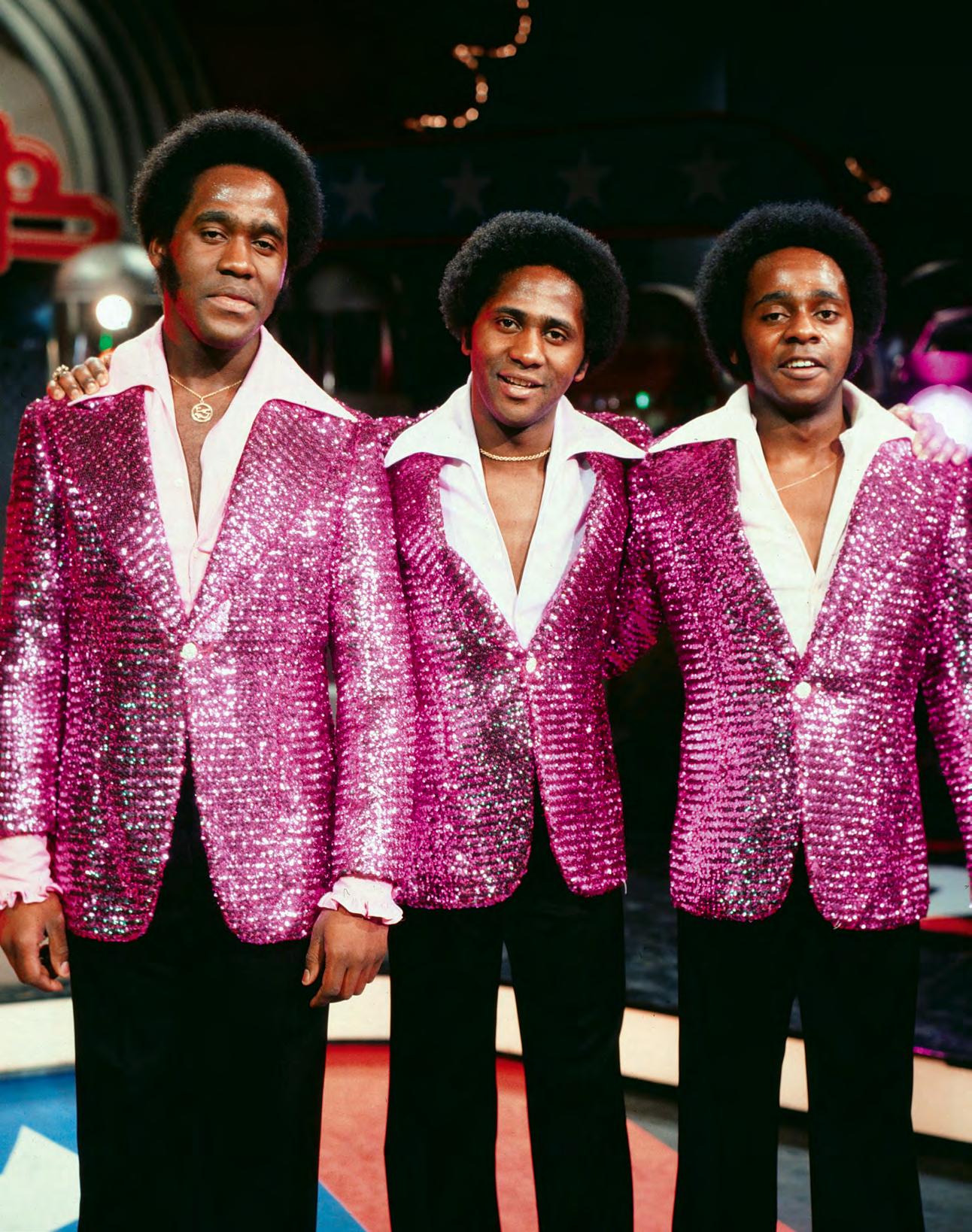

Barry Gibb has a philosophy about writing songs. “Creative visualization,” he says. “You have to imagine something finished before you start doing it. You’ve got to have a picture in your head, and in your heart, of what it’s going to be like when it’s done before you embark on how it’s done.” ● Could Barry Gibb and brothers Robin and Maurice have envisioned how “Stayin’ Alive,” “Night Fever,” and “How Deep is Your Love” would start the Bee Gees’ string of six consecutive number one singles, or turn the Saturday Night Fever (1977) soundtrack into a best-selling behemoth? ● A danceable strand of pop had already reinvigorated the Bee Gees’ sound on Main Course (1975). Working with producer Arif Mardin, “Jive Talkin’” seemed a universe away from late-’60s hits like “To Love Somebody,” though the trio’s love for R&B remained a consistent influence in their songwriting. “We were always exploring how else we could experiment,” says Gibb. Barry Gibb’s falsetto on “Nights on Broadway” introduced a new texture to the Bee Gees’ records and would anchor their biggest hits, including the explosive “You Should Be Dancing” on Children of the World (1976). ● Almost unwittingly, the Bee Gees perfected a pop-disco hybrid on Saturday Night Fever, plus the chart-topping songs they wrote and produced for younger brother Andy Gibb. “They weren’t just tapping into the zeitgeist as they had been with ‘You Should Be Dancing’ two years earlier,” The Guardian noted. “Now the zeitgeist emanated from Criteria Studios in Miami, and from the Gibb brothers themselves.” ● Saturday Night Fever won a GRAMMY Award for “Album of the Year” and catapulted the Bee Gees into a stratosphere of rarefied, 25x platinum success. And with the release of their Spirits Having Flown (1979) album, the fever kept rising...


Linda Clifford recalls the day in April 1978 when “If My Friends Could See Me Now” and “Runaway Love” topped Billboard’s disco chart. “I got a call from Curtis Mayfield’s partner,” she says. “I was on my hands and knees washing my kitchen floor. The phone rang. I picked up the phone. He said, ‘You’re number one in Billboard.’ I said, ‘Very funny’ and I hung up. He called back—’Don’t hang up. I’m not kidding.’ I immediately dropped the phone, ran out, and bought a copy of Billboard because I had to see it.”
● Produced by Gil Askey, If My Friends Could See Me Now (1978) doubled as the title to Clifford’s second album for Curtom Records. The Chicago-based vocalist turned the showstopper from Sweet Charity into a personal anthem. “I was taken aback by the fullness and the beauty of the sound, the real musicians playing,” she says. “This is beauty of another type from the Broadway show but still beauty just the same. I became so proud of the fact that this was going to be my song. I felt I really have to put everything I have into this. I had no idea that the song affected so many people the way that it affected me. A lot of people could relate to having had something negative in their life at one time and then pulling themselves out.” ● Though Clifford returned to number one with “Red Light” from Fame (1980) and Isaac Hayes’ “Shoot Your Best Shot,” her first number one held a special place. “This is the one that really got things rolling for me,” she says. “This was my future, my joy. ● “It was my everything because all of the emotions that you can think of were wrapped up in this album.”


“Beach” was the first dance party of its kind in Fire Island Pines… and France Joli was its most radiant star. “My first American performance in front of 5,000 gay men. I have goosebumps every time I talk about it because it’s so beautiful and so magical,” she says. “It’s divine. It’s because of them that I’m here.” ● The 16-year-old French Canadian vocalist’s “Come to Me” was already a hit in Fire Island clubs when she was invited to perform at the event in July 1979, a benefit to raise money for the beachfront community’s fire department. “It was like a fairy tale,” she says. “All of a sudden, I was Cinderella. I just glided on stage. I remember the spotlight being on me and the wind blowing in my hair. I was trying to give this audience the best of me. Every time I would make a sexy move, they would go nuts.” ● Songwriter and producer Tony Green had written “Come to Me” specifically for Joli after hearing the young vocalist sing Barbra Streisand and Olivia Newton-John. “It’s a pure romance song,” she says. “It suited me so well because I love power ballads. Tony went with ‘Come to Me’ to MIDEM, which is a convention in Cannes, and he visited all the record companies. There was a big buzz about ‘Come to Me’ but we went with a small record label because we didn’t want to get lost in the shuffle.” ● Joli released her self-titled debut on Prelude Records while “Come to Me” crowned the disco chart for three weeks in September 1979. “They pushed the record everywhere,” she says. “It started in New York, then countries all over the world picked it up.” The glittering kingdom of disco now welcomed a new princess to the party.
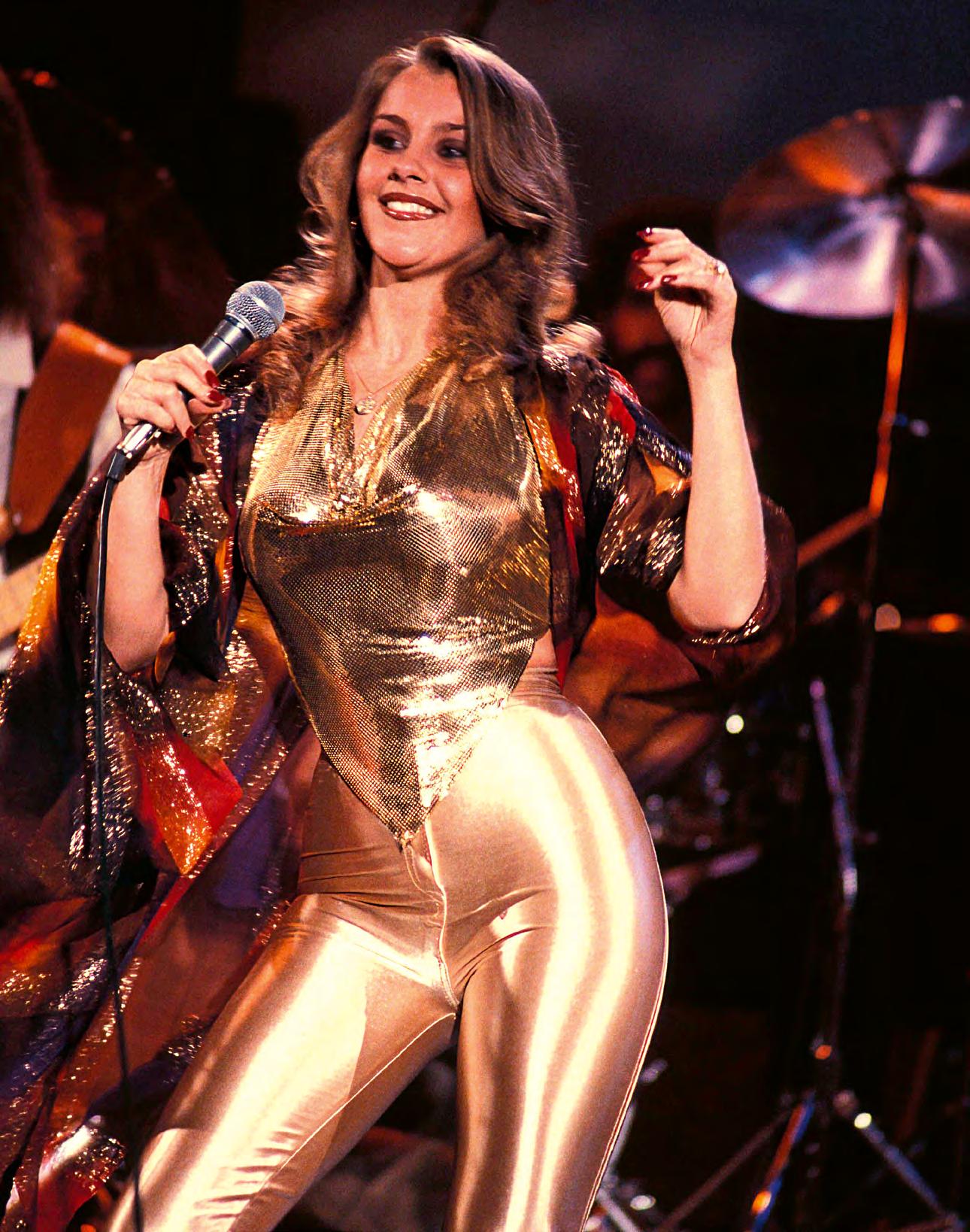

A Night at the Disco celebrates the groundbreaking dance music of the 1970s with an unprecedented collection of photographs featuring more than 100 artists and performers. With a foreword by Verdine White of Earth, Wind & Fire, as well as exclusive and archival commentary from Donna Summer, Barry Gibb, Kathy Sledge, founding members of CHIC, The Trammps, Village People, and dozens more, this spectacular volume illuminates the sounds and styles that defined ’70s nightlife and continue to influence music and pop culture to this day.

